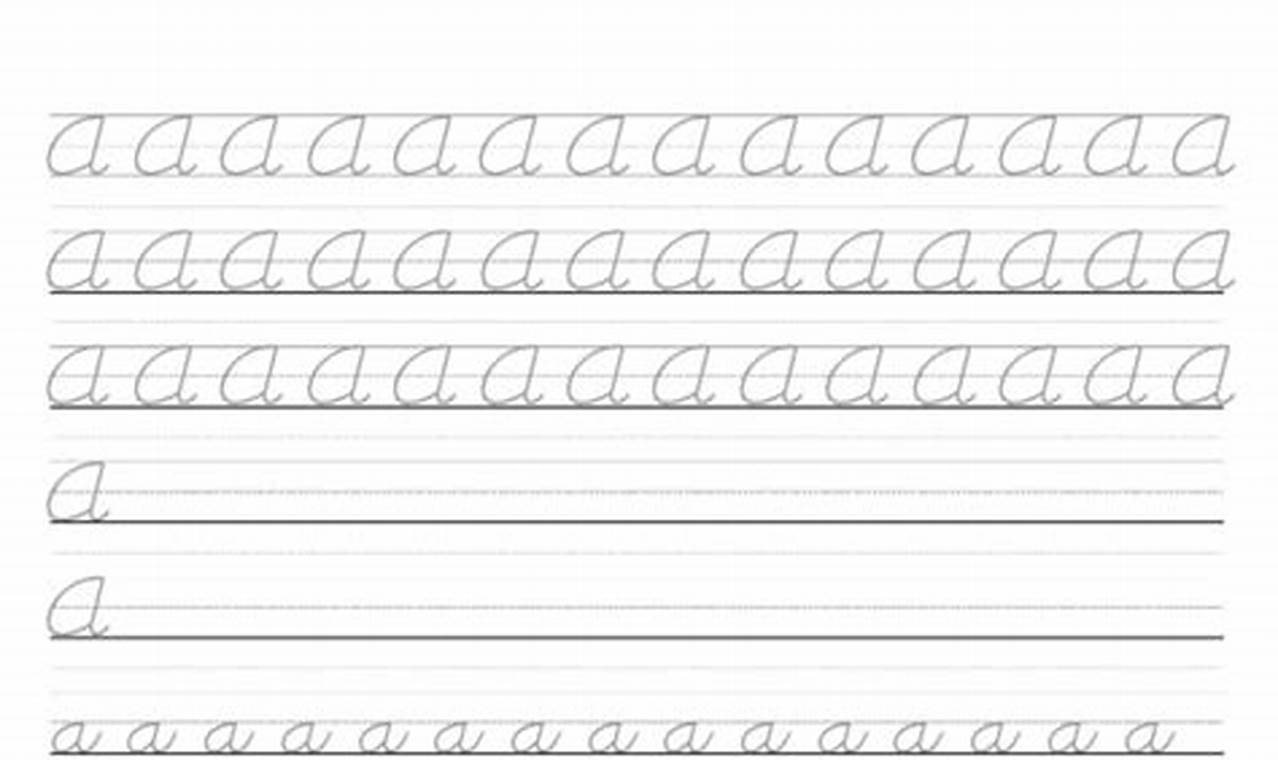Cursive writing, an elegant and flowing script, presents a valuable opportunity for children to develop fine motor skills and enhance their handwriting proficiency. Introducing cursive at an early stage helps children improve hand-eye coordination, letter recognition, and the ability to connect letters seamlessly, laying a strong foundation for future writing endeavors.
This “tracing practice for cursive alphabet letters” worksheet offers numerous benefits. It improves letter formation, hand-eye coordination, and muscle memory. Consistent practice with this worksheet helps children internalize the flow of each cursive letter, improving writing speed and legibility. It also fosters patience and attention to detail, as children carefully trace each curve and line.
The worksheet is structured to guide children through the complete cursive alphabet. Each letter, both uppercase and lowercase, is presented with clear, dotted lines for tracing. Ample space is provided for independent practice after tracing, allowing children to solidify their understanding of each letter’s form. A visual guide showcasing proper letter connections is included, promoting fluency and coherence in cursive writing.
To effectively use the worksheet, begin by having children trace each letter multiple times, focusing on smooth, continuous strokes. Encourage them to follow the directional arrows and pay attention to the starting and ending points of each letter. After tracing, allow them to practice writing the letters independently on the provided lines. Adults can provide guidance by demonstrating proper hand positioning and posture. Breaking the task into smaller segments, such as focusing on a few letters at a time, can prevent frustration and maintain engagement. Using a pencil with a comfortable grip is also recommended.
To supplement the worksheet, consider incorporating related activities such as copying short cursive phrases or sentences. Explore other cursive writing worksheets available on Kidtraces.com for continued practice with letter combinations and word formation. Educational games focusing on letter recognition and handwriting can also be beneficial. Engaging in regular handwriting practice, even for short periods, will reinforce the skills learned through this worksheet.
In conclusion, the “tracing practice for cursive alphabet letters” worksheet provides a structured and effective method for children to learn and improve their cursive writing skills. By utilizing this resource and incorporating the suggested tips, children can develop confidence and proficiency in cursive, enhancing their overall literacy and fine motor abilities. Download the worksheet from Kidtraces.com and explore the many other free resources available to support continuous learning and skill development.
